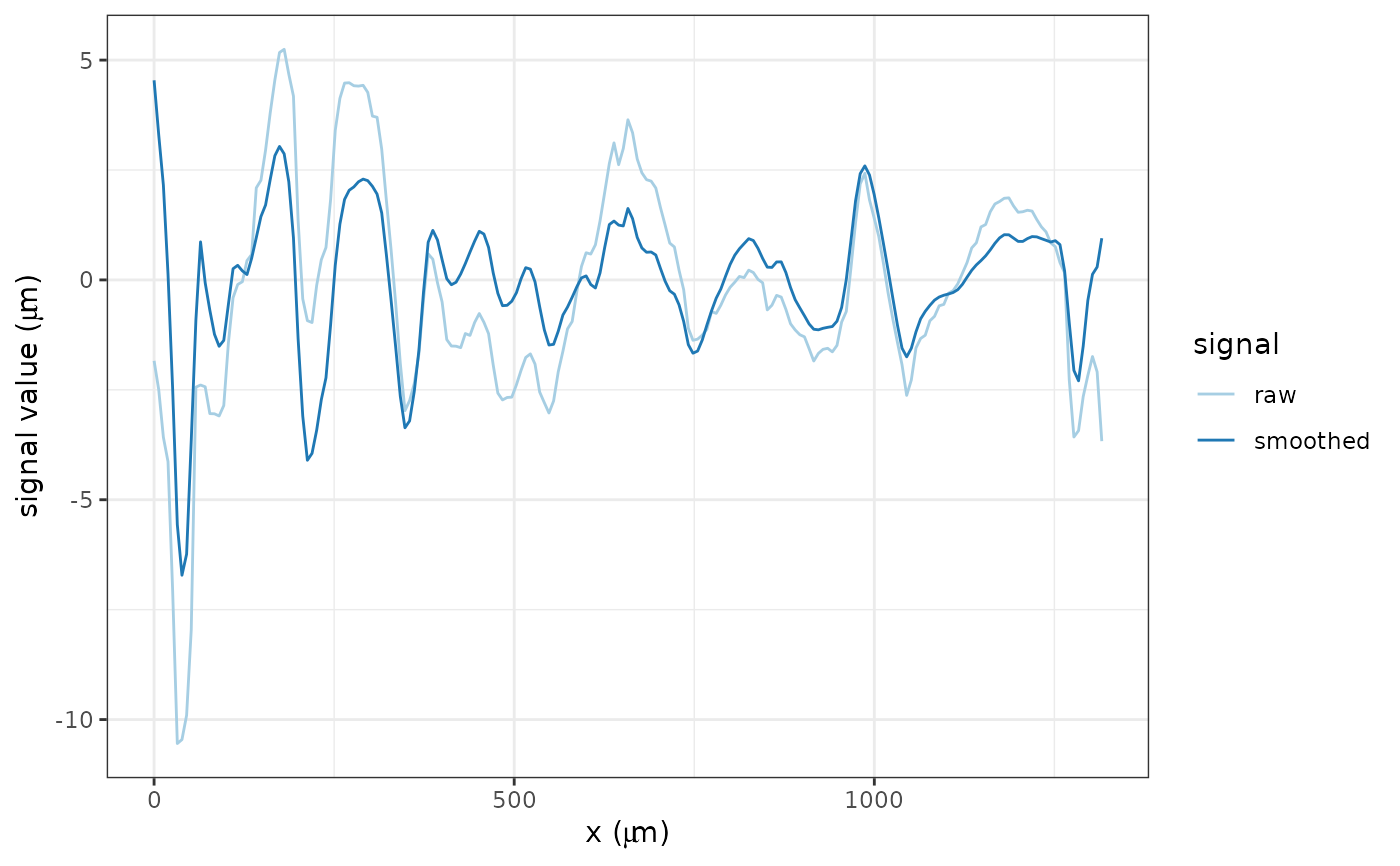This function smooths the signal and removes the hooks by running a t-test in the boundaries to see if there are large 'hooks'.
Usage
df_ccsig(
sig_df,
span1 = 400,
span2 = 40,
breaks_q = c(0, 0.025, 0.05, 0.95, 0.975, 1),
outlier_cycles = 1,
ifplot = FALSE
)Arguments
- sig_df
A signal data frame with two columns:
xandsig.- span1
A positive parameter to control the degree of smoothing in bullterxtrctr::cc_get_signature.
- span2
A positive parameter to control the degree of smoothing in bullterxtrctr::cc_get_signature.
- breaks_q
A vector of quantiles to split the
xvalues into five groups for t-test of large hooks.- outlier_cycles
a positive integer for the number of times we check for outliers along the boundaries.
- ifplot
A Boolean flag indicating whether to save ggplot lists in the output attributes.
Examples
x3p <- x3p_subsamples[[2]]
insidepoly_df <- x3p_insidepoly_df(x3p, mask_col = "#FF0000", concavity = 1.5, b = 1)
x3p_inner_nomiss_res <- df_rmtrend_x3p(insidepoly_df)
x3p_inner_impute <- x3p_impute(x3p_inner_nomiss_res,
ifout = FALSE, ifsave = FALSE, dir_name = NULL, ifplot = FALSE
)
x3p_bin_rotate <- x3p_vertical(x3p_inner_impute, min_score_cut = 0.1, ifplot = FALSE)
raw_sig_df <- x3p_raw_sig_df(x3p_bin_rotate, ifplot = FALSE)
raw_ccsig_df <- df_ccsig(raw_sig_df, ifplot = TRUE)
#> Warning: k-d tree limited by memory. ncmax= 207
attr(raw_ccsig_df, "sig_df_plot")

